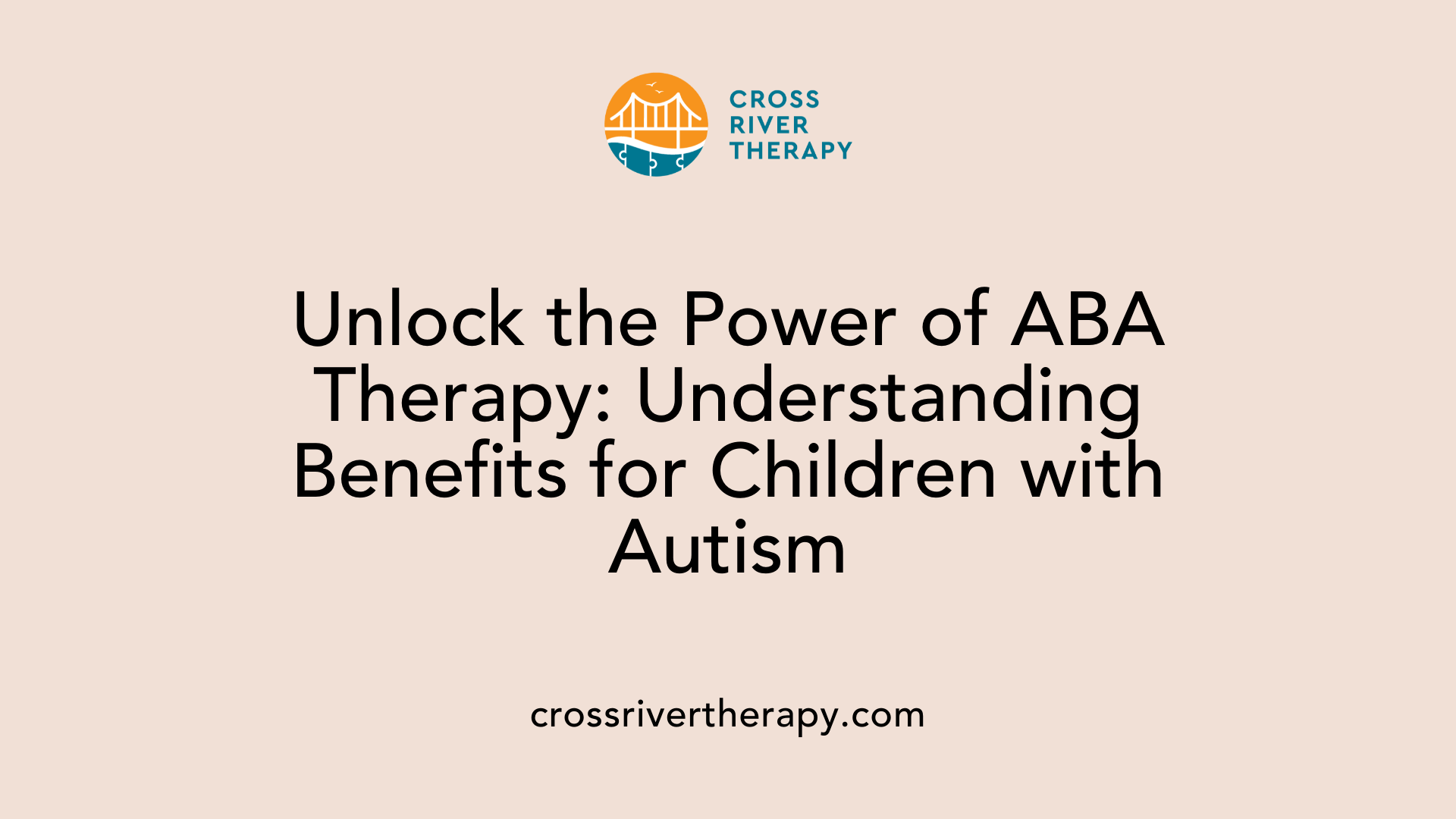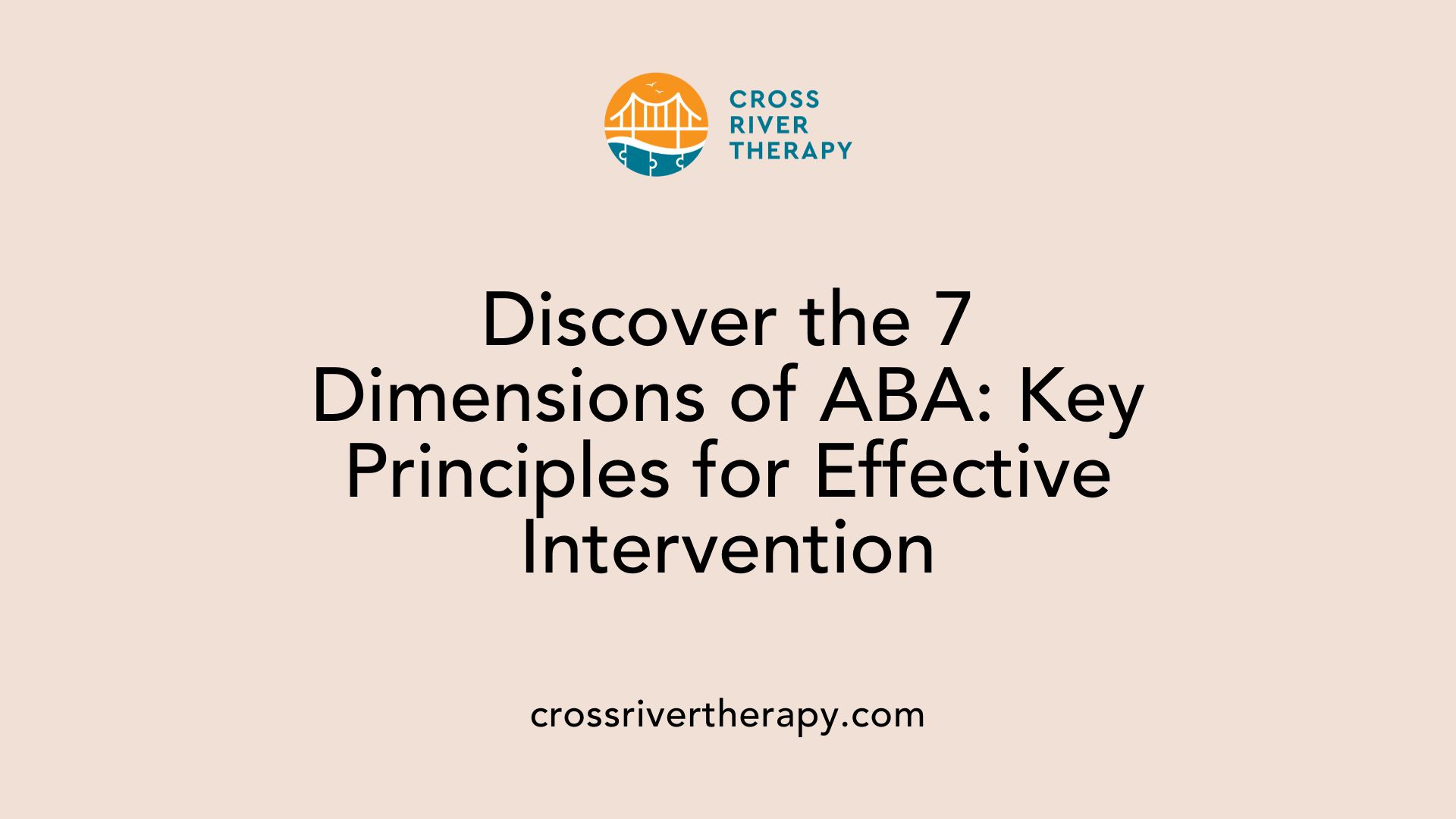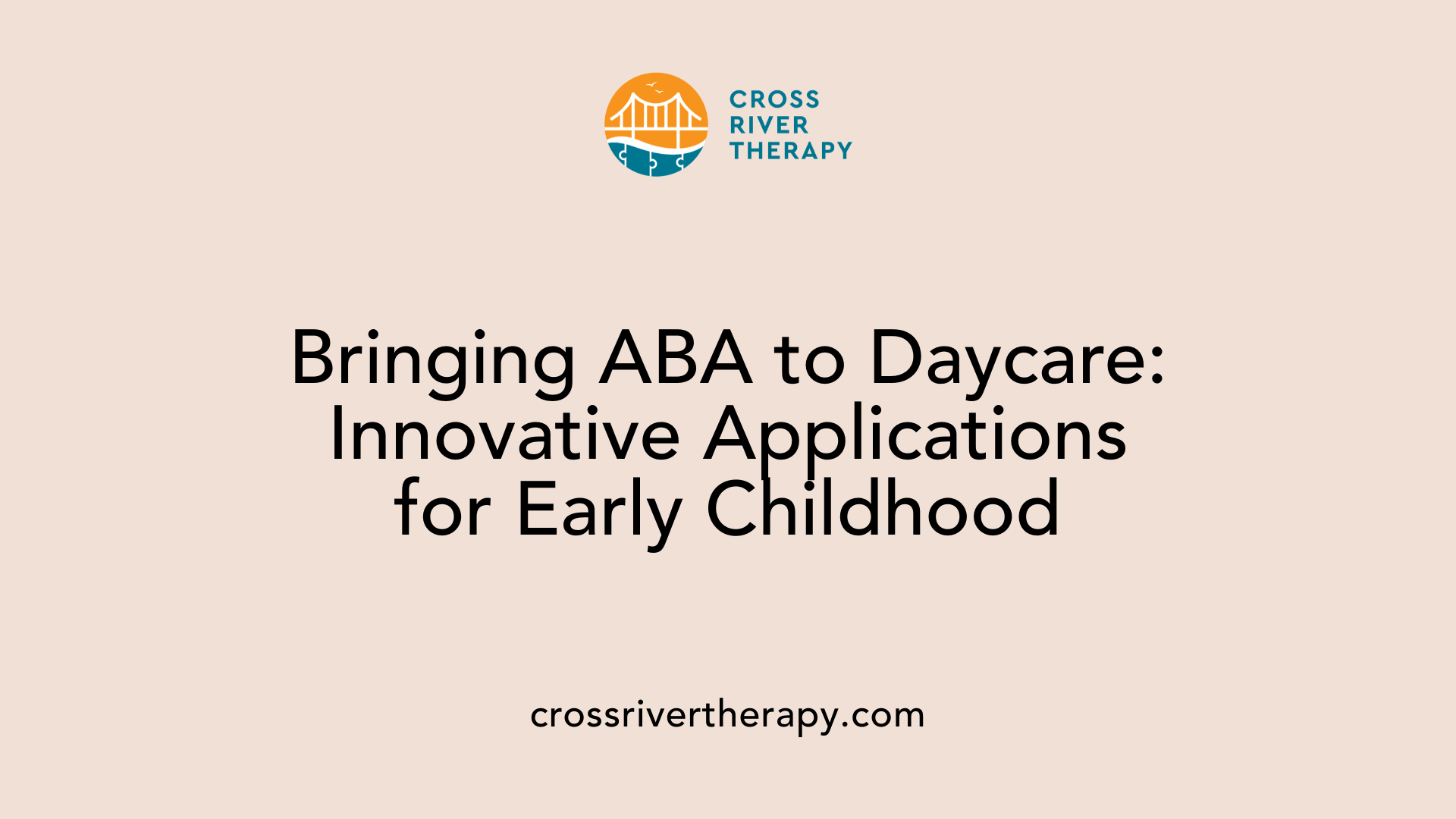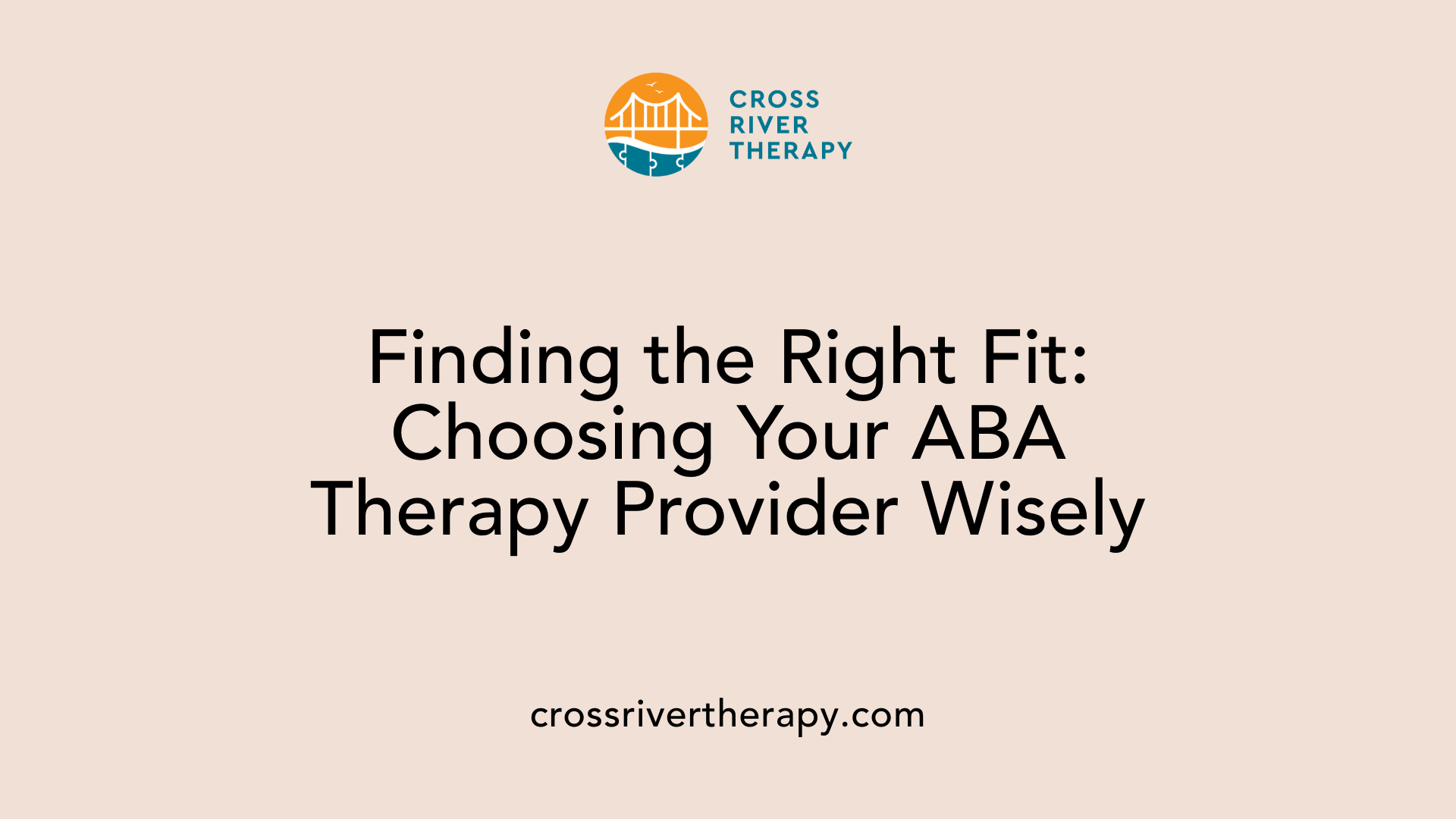ABA Therapy for Child Behavioral Development Centers
Harnessing the Power of ABA Therapy for Autism
Introduction to ABA Therapy
ABA therapy is a pivotal intervention in the realm of autism treatment, focusing on modifying behavior to improve social, communication, and learning skills. This approach is both scientific and personalized, ensuring that the therapy meets the specific needs of each child. As families explore treatment options, ABA therapy emerges as a leading method due to its evidence-based foundation and adaptability to individual circumstances. This article delves into the intricacies of ABA therapy, offering comprehensive insights into its components and effectiveness.
Understanding ABA Therapy and Its Benefits

What is ABA therapy and how does it help with behavior problems?
Applied Behavior Analysis (ABA) therapy is a structured, evidence-based intervention designed primarily for individuals with autism. The main objective is to promote positive behaviors while decreasing negative ones, ultimately enhancing the overall quality of life. ABA effectively addresses severe behavioral issues like aggression, self-injury, and elopement, which usually hinder individuals from engaging in educational and community activities.
The therapy is tailored to each individual’s needs, involving a functional behavior assessment (FBA) to uncover the root causes of specific behaviors. This assessment enables behavior analysts to craft personalized strategies that teach more appropriate behavioral alternatives. The effectiveness of ABA is further enhanced through continuous data collection, which monitors progress and allows for adjustments to be made in real-time. Crucially, parental involvement plays a significant role; caregivers help implement strategies at home, ensuring a consistent and supportive environment for managing challenging behaviors.
Benefits for children with autism
The benefits of ABA therapy extend to various developmental areas, making it an invaluable resource for children with autism. Some of the notable advantages include:
- Increased Communication Skills: Enhancing verbal and non-verbal communication abilities.
- Improved Social Skills: Fostering better interactions with peers and family members.
- Enhanced Attention and Focus: Supporting children in maintaining concentration during tasks.
- Stronger Memory and Learning Skills: Helping children acquire new knowledge effectively.
- Reduction of Problem Behaviors: Minimizing challenges such as tantrums or social withdrawal.
Through intensive, long-term therapy, many children with autism experience significant improvements in these areas, leading to better integration and improved outcomes.
Importance of individualized treatment plans
Individualized treatment plans are central to the success of ABA therapy. A qualified behavior analyst (BCBA) designs and oversees these programs, ensuring they align with the child’s unique skills, needs, interests, and family situations. This customization allows therapy to be more effective and relevant, as it focuses on the individual’s strengths and challenges.
Moreover, treatment goals can span a variety of developmental domains including communication, social skills, self-care, motor skills, and academic learning. By addressing specific areas of need, clinicians can help children achieve their fullest potential and improve their overall quality of life.
| ABA Therapy Benefits | Description | Examples of Skills Improved |
|---|---|---|
| Communication Skills | Develop verbal and non-verbal communication abilities | Speaking, body language |
| Social Skills | Improve interactions and relationships with others | Sharing, understanding cues |
| Attention and Focus | Maintain concentration during activities | Completing tasks, listening |
| Memory and Learning Skills | Enhance knowledge acquisition and retention | School subjects, memorization |
| Reduction of Problem Behaviors | Minimize disruptive or harmful behaviors | Tantrums, aggression |
This table summarizes the distinct benefits of ABA therapy, illustrating its comprehensive approach in supporting children with autism.
Who Can Benefit from ABA Therapy

Who can benefit from ABA therapy?
Applied Behavior Analysis (ABA) therapy primarily supports children with autism and related developmental disorders. The principles of ABA focus on enhancing communication skills, social abilities, academic performance, and reducing harmful behaviors. This makes ABA beneficial not only for children with autism but also for individuals facing diverse behavioral challenges.
Target demographics for ABA therapy
- Children: Most commonly, ABA therapy is offered to children, especially those under the age of 21. It helps improve various skills essential for their development.
- Adolescents and Adults: ABA is also applicable to older individuals on the autism spectrum, aiding them in developing skills that elevate their quality of life, such as employment readiness and social interactions.
- Family Involvement: Programs are often designed to incorporate family dynamics, ensuring that the therapy is both effective and relevant to each individual’s living situation.
Applications across different settings
ABA therapy can be implemented across various environments, including:
- Home: Customized programs can be integrated into daily routines.
- Schools: Supporting academic learning and social interactions with peers.
- Community Settings: Preparing individuals for social events and public interactions.
Benefits for various developmental stages
- Early Childhood: Early intervention can lead to significant improvements in foundational skills such as language and social interaction.
- School Age: Focus on learning and academic success enhances self-sufficiency and reduces the need for special educational support.
- Adulthood: Emphasis on social skills and job readiness promotes independence, contributing positively to adult life.
ABA is an evidence-based practice that is adaptable and effective throughout an individual's lifespan, promoting beneficial behaviors and reducing challenges.
The Core Principles: 7 Dimensions of ABA

What are the 7 dimensions of ABA?
The seven dimensions of Applied Behavior Analysis (ABA) are designed to ensure effective and practical interventions. Here’s a brief overview of each:
- Applied: Focuses on selecting socially significant goals that improve the lives of individuals. For instance, enhancing communication skills is crucial for fostering social interactions.
- Behavioral: Ensures that the behaviors targeted for change are observable and measurable. This clarity allows for better tracking of progress.
- Analytic: Emphasizes the use of data and empirical evidence to guide decisions in therapy interventions, ensuring the approach is based on scientific methods.
- Technological: Requires that treatment methods are described clearly and standardized, enabling replication and understanding across practitioners.
- Conceptually Systematic: Stresses the application of consistent, evidence-based techniques drawn from behavioral principles, promoting integrity in practice.
- Effective: Assesses whether the interventions lead to significant improvements in desired behaviors, meaning the approaches must yield real change.
- Generality: Aims to ensure that behavior changes are not only immediate but maintained over time and across different settings.
Relevance to therapy success
These dimensions are crucial for the success of ABA therapy. By emphasizing applied, measurable behaviors, therapists can focus on goals that truly matter to the individual. The analytic dimension ensures that progress is tracked based on reliable data, which helps adjust strategies as necessary.
How these dimensions improve treatment outcomes
Incorporating the 7 dimensions into ABA therapy leads to holistic and sustainable outcomes. They promote the development of skills that are transferable to real-life situations while also ensuring interventions are effective and grounded in research. Consequently, families often observe substantial improvements not only in academic and social skills but also in self-care and overall functionality.
| Dimension | Description | Impact on Therapy Success |
|---|---|---|
| Applied | Targets socially significant behaviors | Enhances daily life |
| Behavioral | Focus on observable, measurable behaviors | Enables precise progress tracking |
| Analytic | Data-driven evidence for intervention | Adjusts strategies based on results |
| Technological | Clear, standardized methods for replication | Consistency across practitioners |
| Conceptually Systematic | Application of proven techniques | Maintains treatment integrity |
| Effective | Significant improvements in behavior | Real, meaningful changes |
| Generality | Long-lasting, transferable behavior changes | Ensures skills endure and apply |
Understanding and integrating these dimensions strengthens the framework of ABA therapy, ensuring it meets the diverse needs of individuals while fostering meaningful growth.
Implementation in Diverse Settings: Daycare Applications

Can ABA therapy be implemented in daycare settings?
Yes, ABA therapy can be effectively implemented in daycare settings, benefiting young children with autism. Programs like those offered by Pounce Behavioral Health provide individualized treatment plans that specifically address each child's unique strengths and challenges. This customization ensures that therapy is tailored to meet individual needs, making it feasible within the context of a daycare.
Adaptation to early childhood environments
Daycare settings are often bustling with activity, which can actually provide a rich environment for ABA therapy. The techniques used in ABA, such as positive reinforcement, can be seamlessly integrated into daily routines. For example, children can receive praise or small rewards for engaging in desired behaviors during playtime or group activities.
Also, ABA is designed to be flexible. Trained professionals can adjust interventions based on ongoing assessment of a child's progress. This adaptability helps facilitate consistent support that aligns with the high-energy environment typical of early childhood programs.
Collaborative approaches with caregivers
Collaboration between behavior analysts and daycare staff is critical for success. Caregivers and teachers can be involved in the development and execution of the ABA plans, ensuring that strategies remain consistent across different settings. This unified approach helps reinforce learning and behavior management, allowing children to thrive both at daycare and home.
| Aspect | Description | Benefits |
|---|---|---|
| Implementation | Tailored ABA plans in daycare environments | Consistency of support and learning in familiar settings |
| Early Adaptation | Techniques integrated into daily daycare routines | Enhances communication and social skills in natural settings |
| Collaborative Caregivers | Partnership between analysts, teachers, and parents | Increased effectiveness through unified strategies |
Overall, ABA therapy in daycare settings not only supports children in developing essential skills but also helps establish a network of support that includes parents and educators.
Key Components of ABA Therapy Programs
Role of Qualified Behavior Analysts
A crucial element of Applied Behavior Analysis (ABA) therapy is the role of the Behavior Analyst, typically a Board Certified Behavior Analyst (BCBA).
These professionals are responsible for designing and implementing individualized treatment plans. Their expertise ensures that each therapy program is based on sound principles of learning and behavior, tailored to meet the specific needs and interests of the child.
Customization of Programs to Individual Needs
ABA therapy is not a one-size-fits-all approach. Each program is customized to address various skill areas such as communication, social skills, and self-care.
Individualization means that strategies used are aligned with the personal strengths of the child and their family situations, enhancing engagement and effectiveness in therapy sessions.
Importance of Ongoing Assessment and Adjustments
As therapy progresses, ongoing assessments are vital to measure the child's development and the effectiveness of the interventions.
Based on these evaluations, a BCBA will regularly adjust the treatment plan, ensuring that it continues to meet the evolving needs of the child. This flexibility is key to achieving sustained positive outcomes in areas like language skills, social interactions, and academic performance.
| Component | Description | Significance |
|---|---|---|
| Qualified Behavior Analysts | Trained professionals overseeing therapy programs | Ensures personalized treatment |
| Program Customization | Tailoring strategies to suit individual needs | Promotes better engagement |
| Ongoing Assessment | Regular evaluations of progress and effectiveness | Allows for timely adjustments to interventions |
Techniques and Strategies Used in ABA Therapy
Positive Reinforcement and Its Role
One of the fundamental techniques in Applied Behavior Analysis (ABA) is positive reinforcement. This method involves identifying a desired behavior and following it with a reward, which increases the likelihood of the behavior being repeated. Rewards can be tangible, like stickers or tokens, or intangible, such as praise or additional playtime. This technique not only encourages good behavior but also helps build a sense of achievement and motivation in individuals.
Behavior Modification Strategies
ABA employs various behavior modification strategies tailored to meet individual needs. Some popular strategies include:
- Prompting: Offering cues or hints that guide the individual towards the desired behavior.
- Modeling: Demonstrating an appropriate behavior for the individual to imitate.
- Task Analysis: Breaking down complex tasks into smaller, manageable steps. These strategies aim to gradually reduce problem behaviors while promoting positive ones, allowing for more effective learning and development.
Creating Supportive Environments for Learning
A vital aspect of ABA focuses on creating supportive environments conducive to learning. This involves designing settings that minimize distractions and enhance engagement. By customizing environments based on individual skills and family situations, behavior analysts ensure that the learning experience is positive and effective. Families also play an essential role in reinforcing behaviors at home, creating a consistent approach that aids in the overall success of the therapy.
Insurance Coverage and Financial Considerations
Insurance policies covering ABA
Insurance coverage for Applied Behavior Analysis (ABA) therapy is an important factor for families seeking support for children with autism. Many private insurers and Medicaid plans recognize ABA as a medically necessary treatment for children under 21. This recognition means that families can often access financial assistance to help cover therapy costs.
Variability in coverage
However, insurance coverage can vary significantly from one policy to another. Some plans may cover the entire cost of ABA therapy, while others may only cover a portion or impose specific limitations. It is crucial for parents to thoroughly review their insurance policies to understand what services are covered and any restrictions that may apply.
Navigating financial aspects for parents
To navigate these financial aspects, parents can take several steps. First, they should contact their insurance provider for detailed information about coverage limits and requirements. Additionally, documenting the necessity of ABA therapy and obtaining a referral from a qualified behavior analyst can also help in claiming benefits.
Here's a quick reference table summarizing these points:
| Coverage Aspect | Details | Action Steps for Parents |
|---|---|---|
| Insurance Type | Many private insurers and Medicaid may cover ABA | Check your specific policy |
| Coverage Variability | Policies differ; some may have limits or co-pays | Review your benefits and exclusions |
| Financial Navigation | Documentation and referrals can assist with claims | Contact your provider and prepare records |
In conclusion, understanding and navigating insurance coverage for ABA therapy is vital for families aiming to provide their children with necessary support.
Evaluating ABA Program Effectiveness
Indicators of successful ABA interventions
When assessing the effectiveness of an ABA program, specific indicators can help determine if the intervention is beneficial. These may include improvements in communication skills, enhanced social interactions, and a reduction in problem behaviors. Additionally, observable changes in daily living skills, such as self-care and independence, signify positive outcomes.
Measuring progress and making adjustments
Progress in ABA therapy is typically monitored through ongoing assessments. Qualified behavior analysts (BCBAs) utilize data collection techniques to track each individual's growth against established goals. If a child is not progressing as expected, adjustments are made to the program, which may include altering reinforcement strategies or introducing new techniques tailored to the child's evolving needs.
Parental involvement in therapy evaluation
Parental participation is crucial in evaluating the effectiveness of ABA therapy. Parents are often encouraged to communicate openly with BCBAs about their observations at home. Their insights into the child's behavior and progress help shape the therapy's direction and ensure it aligns with family dynamics and lifestyle, ultimately enriching the child's therapy experience.
Applications Beyond Autism: Broader Impacts
ABA therapy for other developmental disorders
Applied Behavior Analysis (ABA) is not limited to treating autism spectrum disorders; it is also beneficial for other developmental conditions like Attention Deficit Hyperactivity Disorder (ADHD), Oppositional Defiant Disorder (ODD), and learning disabilities. The principles of ABA can be effectively adapted to tailored interventions that address specific challenges associated with these disorders.
Adapting techniques for various conditions
ABA techniques focus on modifying behavior through systematic assessment and intervention. Qualified behavior analysts customize programs to fit individual needs, considering their unique skills and interests. For example, children with ADHD may benefit from ABA strategies that enhance attention and impulse control, while those with learning disabilities might focus on academic skills through structured reinforcement techniques.
Benefits beyond autism spectrum
Beyond its application in autism, ABA shows promise in enhancing communication skills, social interactions, and general life skills across various populations. Parents recognize improvements in their children’s emotional regulation and problem-solving abilities, illustrating ABA's versatility as a comprehensive behavioral support system.
| Application Area | Specific Benefits | Target Populations |
|---|---|---|
| Communication Skills | Enhanced verbal and non-verbal skills | Children with developmental delays |
| Social Skills | Improved interactions and cooperation | Children with ADHD and ODD |
| Academic Performance | Increasing focus and academic success | Students with learning disabilities |
| Self-regulation | Better emotional and behavioral control | Children with anxiety disorders |
Choosing the Right ABA Therapy Provider

Criteria to consider when selecting a provider
When selecting an ABA therapy provider, it is essential to consider their qualifications. Look for a Board Certified Behavior Analyst (BCBA) who has the necessary training and credentials. Additionally, assess their experience working with children who have similar needs and backgrounds.
Assessing quality of care and expertise
Quality of care is paramount. Ask about the provider's approach and techniques. Reputable providers are transparent about their methodologies. You can also request references from other families to gauge satisfaction and effectiveness.
Personalized vs standardized programs
Every child is unique, and so are their therapy needs. Evaluate whether the provider offers customized programs designed to meet individual skills and interests. While some programs may be standardized, personalized plans tend to yield better outcomes as they cater specifically to each child's requirements.
| Criteria | Description | Considerations |
|---|---|---|
| Qualifications | BCBA credentialing and training | Experience with specific needs |
| Quality of Care | Methodology and approach to therapy | References from previous clients |
| Program Personalization | Customized versus standardized programs | Assessment of individual needs |
Choosing the right ABA therapy provider can significantly impact your child's progress and comfort during treatment.
Taking the Next Steps: Enrolling in ABA Therapy
Actionable Steps for Parents
Enrolling a child in ABA therapy involves several steps. First, parents should consult with a pediatrician or a qualified health professional who can provide guidance on whether ABA is appropriate. After securing a recommendation, the next step is to find a qualified behavior analyst (BCBA). They will conduct an assessment to develop a tailored therapy plan that considers the child’s individual needs and circumstances.
Resources and Support Services Available
Many resources exist to assist parents through this process. Organizations such as the Autism Society and local autism support groups can provide valuable information about finding licensed ABA practitioners. Additionally, websites like the Association for Behavior Analysis International list certified professionals, making it easier to connect with providers.
What to Expect During the Enrollment Process
Once a BCBA is engaged, they will initiate an evaluation phase, observing the child and discussing goals with the family. This evaluation informs the treatment plan, which outlines the therapy objectives and strategies. As part of the process, parents might need to interact with their insurance provider to verify coverage, as many Medicaid plans and private insurers now cover medically necessary ABA services for children under 21. Regular meetings with the BCBA will help ensure that parents stay informed about their child’s progress.
Conclusion: Empowering Change Through ABA
ABA therapy serves as a transformative means to enhance the lives of children with autism and other developmental disorders. By addressing each child's unique needs through careful observation, personalized treatment plans, and consistent implementation, ABA therapy fosters an environment of growth and learning. As caregivers and providers work in tandem to support children, the benefits of this approach become evident, showcasing significant progress in behavior, communication, and social interaction. For families navigating the journey of autism therapy, ABA offers a scientifically-backed, compassionate approach to achieving developmental milestones and improving overall quality of life.
References
- Applied Behavior Analysis (ABA) | Autism Speaks
- What are the 7 Dimensions of Applied Behavior Analysis (ABA)
- Applied Behavior Analysis (ABA) | Autism Speaks
- Expert Q&A: How ABA therapy can help with severe behaviors
- Verbal Behavior Therapy | Autism Speaks
- Questions to ask an ABA therapist | Autism Speaks
- Can ABA help a teen on the mildly affected end of the autism ...
- Expert Q&A: How ABA therapy can help with severe behaviors
- Positive Reinforcement - Autism Speaks
- Challenging Behaviors Tool Kit - Autism Speaks



